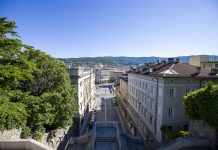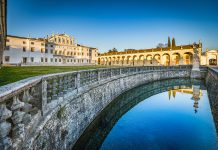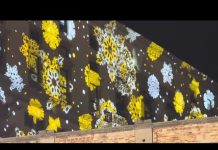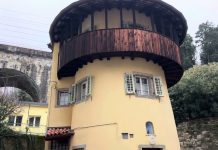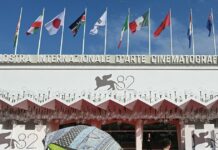by Maximiliano Crocamo
Interviews: FVG councilor for environmental protection; Guyonne Querner, CEO of logistica giuliana
A large mound of industrial waste long known to Trieste residents as the nasone has been dismantled in the former Ferriera di Servola steel plant area, with its processed debris now forming the base of the future Molo VIII logistics platform. Regional officials described the operation as an example of accelerated public–private cooperation in reshaping a major industrial site.
The update was presented on Thursday by Fabio Scoccimarro, Friuli Venezia Giulia’s regional councillor for environment, energy, and sustainable development, during a briefing at Logistica Giuliana’s headquarters and later at the former steelworks site. The company’s CEO, Guyonne Querner, also took part.
Scoccimarro said the removal of the mound — a long-standing remnant of the plant’s operations — marks a turning point in the transformation of the area. The materials, he said, were treated and repurposed to support the foundation of the new port logistics platform. This, he argued, reflects not only technological progress but also improved administrative processes that streamline investment.
He praised the regional environmental agency, Arpa FVG, for its role in the remediation and emphasized that the changes underway represent “a real shift” for the Trieste waterfront. The shutdown of the plant’s hot area and the conversion of the neighboring A2A energy facility, he said, form part of a broader regional effort to reduce carbon emissions across the Gulf of Trieste.
According to Scoccimarro, the port is emerging as a central driver of the city’s economic strategy, functioning as “a large and complex industrial machine” capable of generating jobs and competitiveness while making optimal use of surrounding land.
He also underscored that the transition out of coal and toward the new logistics hub has proceeded without layoffs, calling this a political and ethical choice aimed at ensuring job security. He thanked the national government for supporting the development of Molo VIII, which he described as a strategic project that strengthens Trieste’s position within European logistics networks.
Scoccimarro said the redevelopment of the former industrial zone shows that outdated infrastructure can be transformed into a modern, sustainable platform for new investment when guided by shared institutional planning.
He concluded by expressing hope that a monument will be created in honor of the Ferriera’s workers, whose labor, he noted, shaped Trieste’s industrial growth for more than a century.




